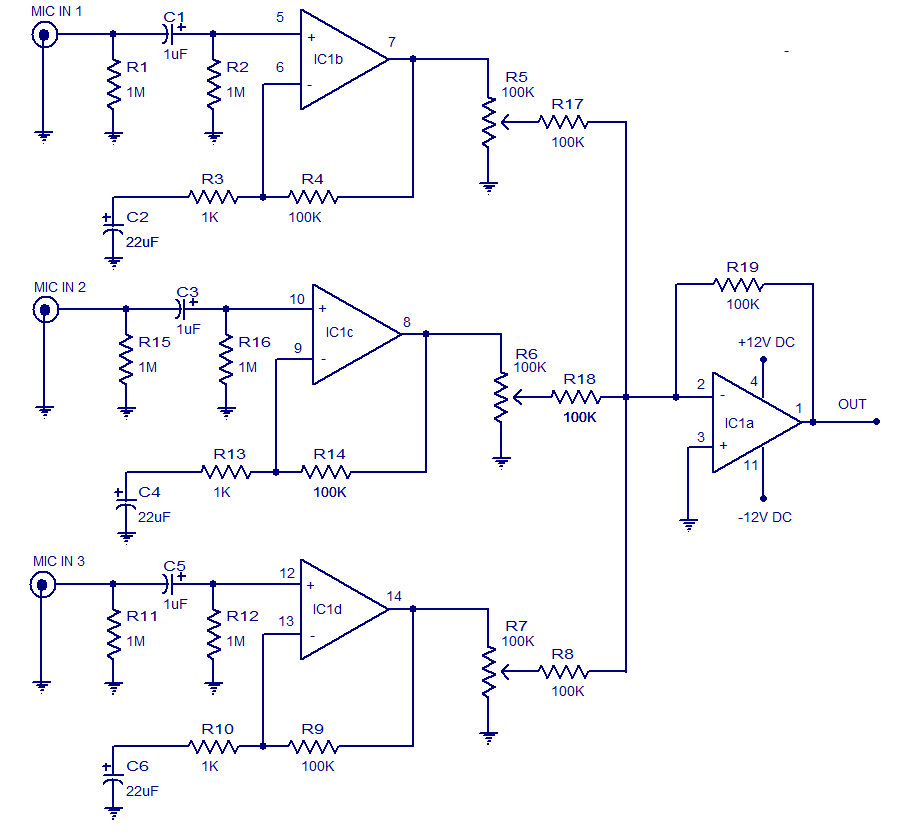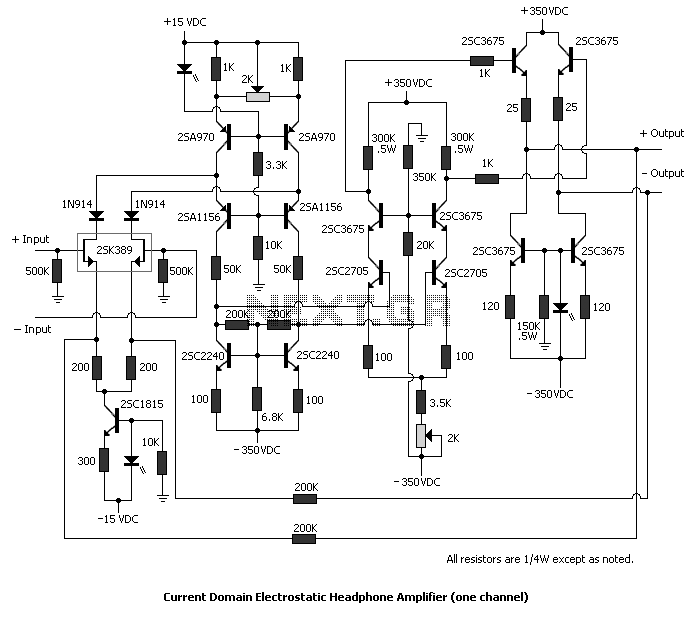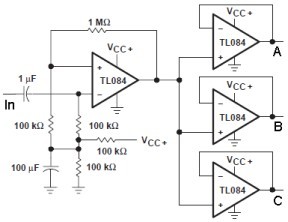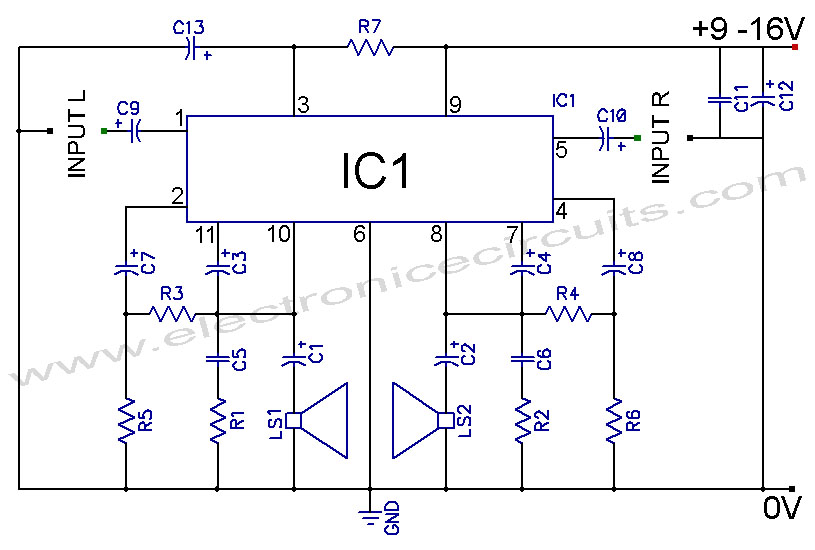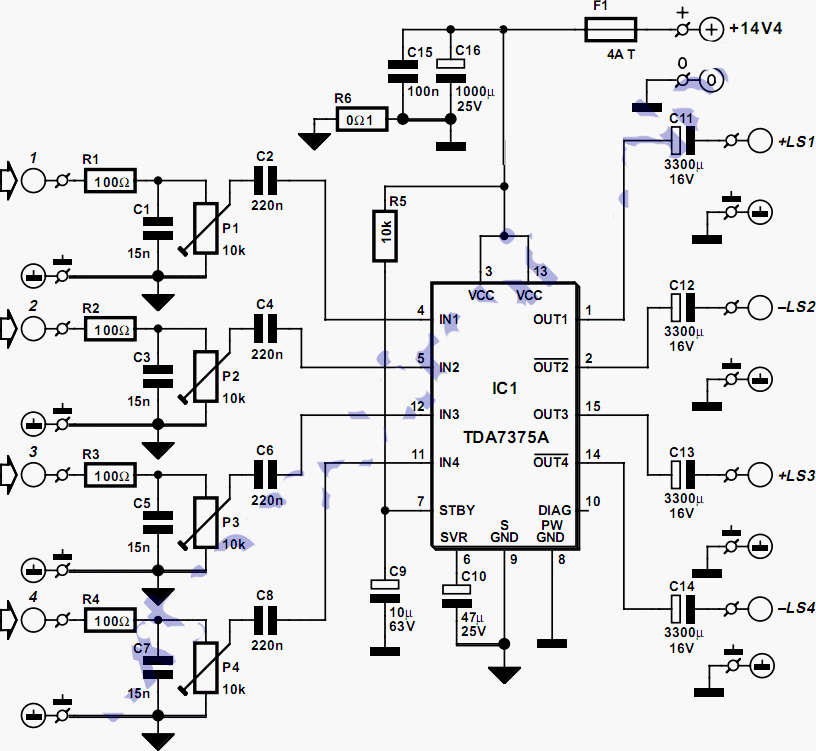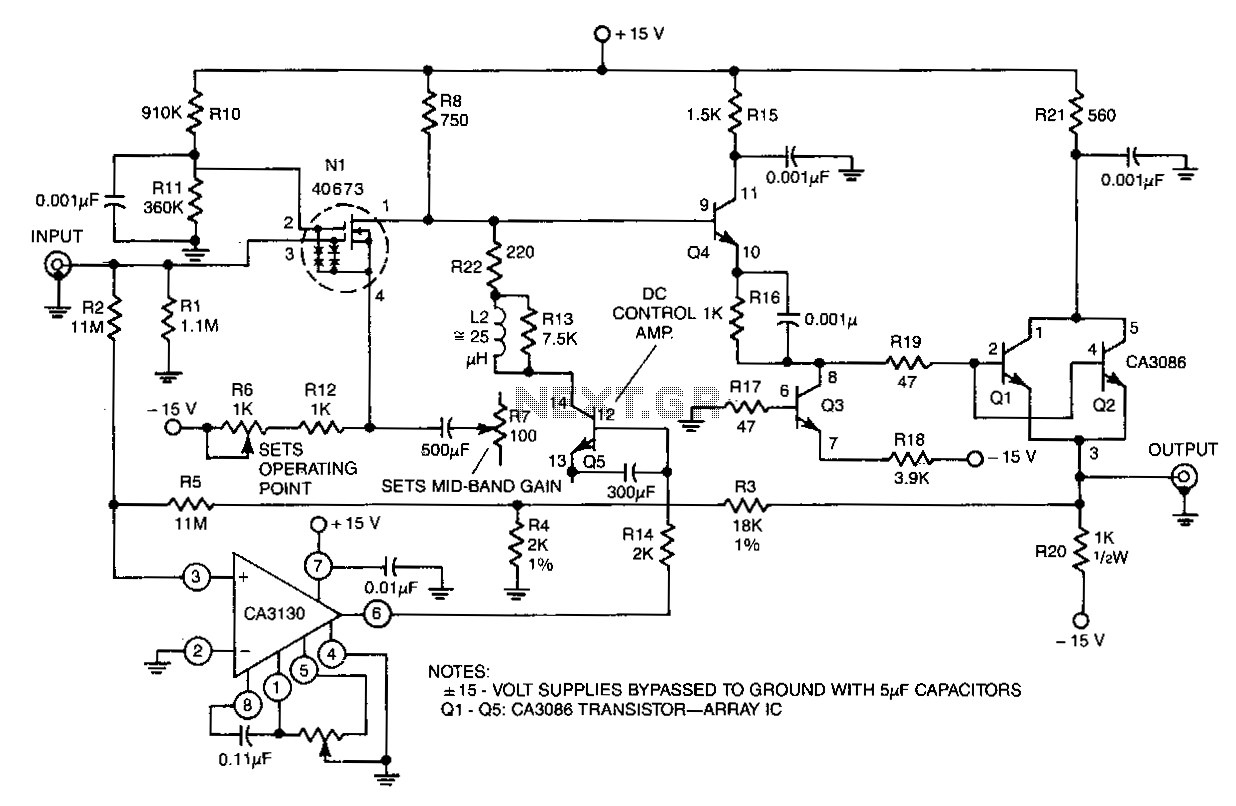
Mini 10W Amplifier

You can use this powerful amplifier in any small audio project. It is very small (6.5 x 4.5 cm). It outputs 10W and uses a 9V battery. More: Components List R1: 6 Ohm R2: 220 Ohm R3: nothing R4: 10 KOhm potentiometer C1: 2200 uF / 25V C2: 470 uF / 16V C3: 470 nF / 63V C4: 100 nF C5: nothing C6: nothing IC1: TDA 2003
The described circuit is a compact audio amplifier utilizing the TDA 2003 integrated circuit, which is designed for low-power applications. The amplifier is capable of delivering an output power of 10W, making it suitable for small audio projects, such as portable speakers or personal audio systems.
The dimensions of the circuit board are 6.5 x 4.5 cm, allowing for easy integration into various enclosures or setups. The power supply for this amplifier is a 9V battery, providing a convenient and portable power source.
The component list includes several resistors and capacitors that are critical for the amplifier's performance. R1 is a 6 Ohm resistor, likely used as a load for the output stage, while R2, a 220 Ohm resistor, may be part of the feedback network to stabilize the gain. R4 is a 10 KOhm potentiometer, which allows for adjustable gain control, giving users the ability to fine-tune the output level to their preference.
Capacitors C1, C2, C3, and C4 play essential roles in filtering and coupling within the circuit. C1, with a value of 2200 µF and a voltage rating of 25V, is likely used for power supply decoupling, providing a stable voltage to the amplifier. C2, rated at 470 µF and 16V, may serve a similar purpose or be used in the coupling stage to block DC while allowing AC signals to pass. C3, a 470 nF capacitor with a 63V rating, is often used for high-frequency filtering, while C4, at 100 nF, could be utilized for additional decoupling or coupling functions.
The circuit does not include components R3, C5, and C6, indicating that these positions may be optional or unused in this specific design. The TDA 2003 integrated circuit (IC1) is the heart of the amplifier, featuring built-in short-circuit protection and thermal shutdown capabilities, enhancing the reliability of the circuit.
Overall, this compact audio amplifier circuit is well-suited for small-scale audio projects, providing a balance of power and portability, while maintaining a simple component layout for ease of assembly and modification.You can use this powerfull amplifier in any small audio project. It is very small (6.5 x 4.5 cm).It outputs 10W and uses a 9V battery. Componets List R1 : 6 Ohm R2 : 220 Ohm R3 : nothing R4 : 10 KOhm pontesiometer C1 : 2200 uF / 25V C2 : 470 uF / 16V C3 : 470 nF / 63V C4 : 100 nF C5 : nothing C6 : nothing IC1 : TDA 2003 🔗 External reference
The described circuit is a compact audio amplifier utilizing the TDA 2003 integrated circuit, which is designed for low-power applications. The amplifier is capable of delivering an output power of 10W, making it suitable for small audio projects, such as portable speakers or personal audio systems.
The dimensions of the circuit board are 6.5 x 4.5 cm, allowing for easy integration into various enclosures or setups. The power supply for this amplifier is a 9V battery, providing a convenient and portable power source.
The component list includes several resistors and capacitors that are critical for the amplifier's performance. R1 is a 6 Ohm resistor, likely used as a load for the output stage, while R2, a 220 Ohm resistor, may be part of the feedback network to stabilize the gain. R4 is a 10 KOhm potentiometer, which allows for adjustable gain control, giving users the ability to fine-tune the output level to their preference.
Capacitors C1, C2, C3, and C4 play essential roles in filtering and coupling within the circuit. C1, with a value of 2200 µF and a voltage rating of 25V, is likely used for power supply decoupling, providing a stable voltage to the amplifier. C2, rated at 470 µF and 16V, may serve a similar purpose or be used in the coupling stage to block DC while allowing AC signals to pass. C3, a 470 nF capacitor with a 63V rating, is often used for high-frequency filtering, while C4, at 100 nF, could be utilized for additional decoupling or coupling functions.
The circuit does not include components R3, C5, and C6, indicating that these positions may be optional or unused in this specific design. The TDA 2003 integrated circuit (IC1) is the heart of the amplifier, featuring built-in short-circuit protection and thermal shutdown capabilities, enhancing the reliability of the circuit.
Overall, this compact audio amplifier circuit is well-suited for small-scale audio projects, providing a balance of power and portability, while maintaining a simple component layout for ease of assembly and modification.You can use this powerfull amplifier in any small audio project. It is very small (6.5 x 4.5 cm).It outputs 10W and uses a 9V battery. Componets List R1 : 6 Ohm R2 : 220 Ohm R3 : nothing R4 : 10 KOhm pontesiometer C1 : 2200 uF / 25V C2 : 470 uF / 16V C3 : 470 nF / 63V C4 : 100 nF C5 : nothing C6 : nothing IC1 : TDA 2003 🔗 External reference
